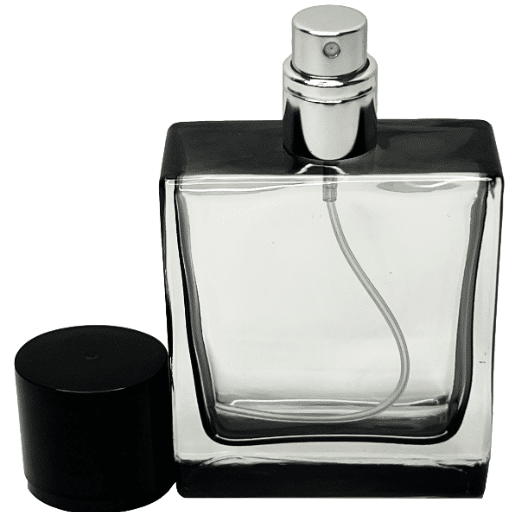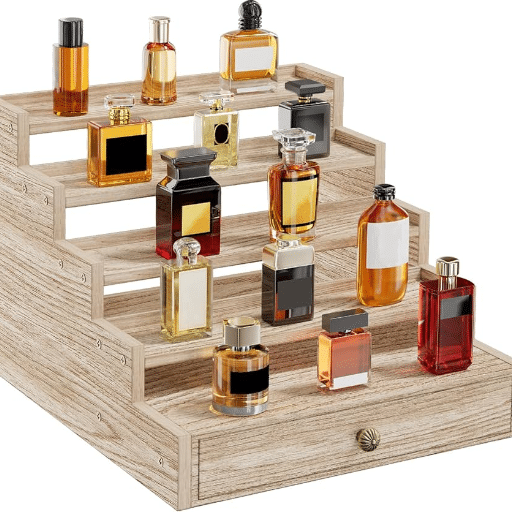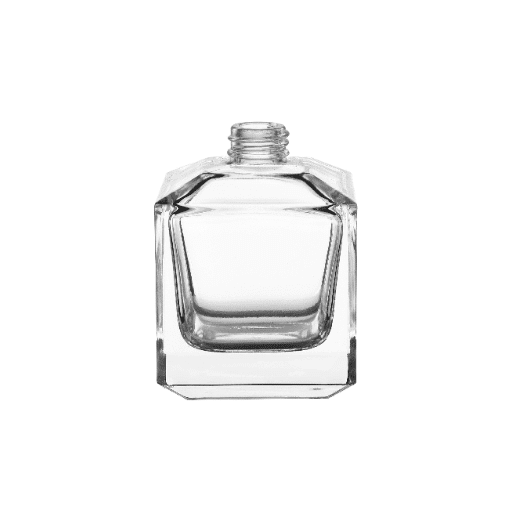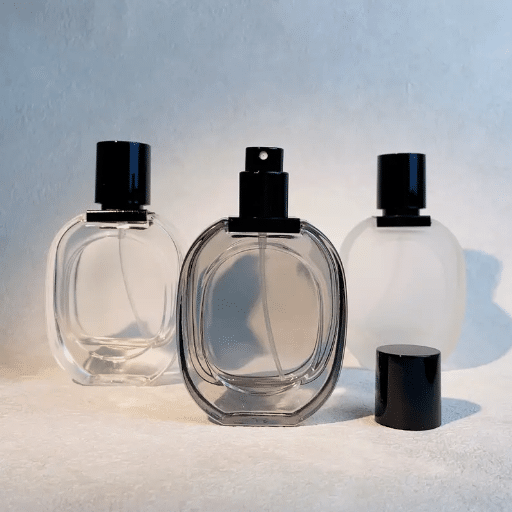Perfume bottles are more than mere containers; they are miniature works of art, combining aesthetics, function, and storytelling into a single design. A bottle acts as an exquisite glass artifact, connoting either a vintage or a contemporary, smooth-as-silk silhouette. This article delves into the bizarre world of perfume bottle design, exploring evolving forms, craftsmanship, and how they act as vehicles for cultural trends and personal expression. In case you are a collector of perfume bottles, a design buff, or simply someone who finds the charm of luxury appealing, this manual will take you through the unique journey of bottles that have been bewitching since time immemorial. Strap in! You’ll soon discover how form and function go hand in hand.
Introduction to Perfume Bottles
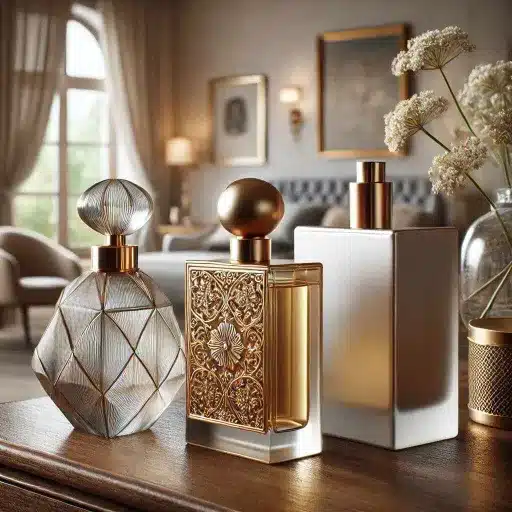
There are practically as many perfume bottles as there are perfumes. The bottles need to store the fragrance and protect it from light, air, and impurities that would destroy or degrade it over time. Over time, it has become a symbol of fashion and luxury, with its designs reflecting cultural movements, art trends, and marketing strategies. From simplistic and modern designs to more elaborate vintage styles, perfume bottles straddle the line between the utilitarian and the artistic, elevating the entire experience around the fragrance stored inside.
Understanding the Importance of a Perfume Bottle
Good perfume bottles are essentially vessels that protect the fragrance liquid against external factors, such as sunlight or air, which can weaken the smell over time. Their presence before the consumer was never considered a branding and marketing tool. Individuals tend to be attracted to perfumes that are aesthetically bottled in a manner that evokes an emotion or matches their own design-oriented way of thinking. From a creative viewpoint, the artistry of the bottle typically tells the story of the fragrance inside and offers potential purchasers another, perhaps their first, sensorial connection. Considering the growing trend toward greater interest in sustainability, manufacturers are designing products with eco-friendliness in mind, from recyclable to refillable options, catering to the modern consumer.
Overview of Different Types of Perfume Bottles
Perfume bottles come in numerous shapes, each with some functional basis while serving an aesthetic purpose. These bottles are commonly equipped with a spray pump to dispense the perfume in a fine mist, making application easy. Splash bottles are used for applying scent to the skin. Roll-on bottles are compact and ideal for travel, featuring a rollerball for precise application. On the other hand, luxury perfume bottles can be decorative collectibles, with this intricate detailing reflecting craftsmanship and brand identity. Refillable bottles are the future, as they cater to conscientious consumers who want to reduce littering and help save the planet.
The Evolution of Perfume Bottles Through History
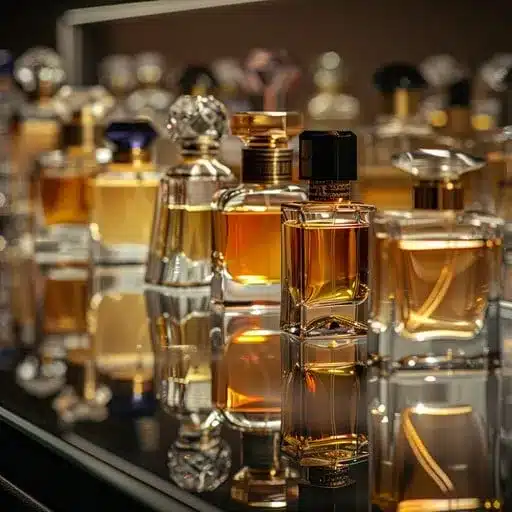
Historically, perfume bottles have been in use for thousands of years, and their designs have evolved in response to the culture, art, and technology of their respective eras. The Ancient Egyptians and Mesopotamians crafted perfume containers from alabaster, clay, and glass to store sacred oils and aromatic substances. During the Roman Empire period, intricate glassblowing techniques were developed; consequently, the bottles were much more elaborate and ornate in design, reflecting the importance of status and wealth.
During the Renaissance period, there was a notable interest in artistic expression, and perfume bottles became miniature works of art, decorated with gold, silver, and enamel. By the time of the 19th-century Industrial Revolution, manufacturers were also producing bottles in more sophisticated styles, such as those made of crystal, with elaborate stoppers. The 20th century witnessed the rise of modern branding, as the fashion and fragrance industries merged to give rise to designers such as Coco Chanel and René Lalique, whose glamour continues to inspire the design of perfume bottles to this day.
Modern-day perfume bottles wish to merge traditional craftsmanship with contemporary innovation in all four areas: functionality, sustainability, design, and manufacture. In a way, this evolution speaks to a men-and-women relationship with beauty, art, and sensory experiences that has lasted throughout time.
Categories of Different Types of Perfume Bottles
Classic Glass Bottles
These timeless containers are made from fine glass, representing elegance, purity, and beauty. They are preferred for preserving the scent of an aroma spray while exhibiting its liquid from within.
Travel-Sized Bottles
Travel-sized bottles are smaller and convenient for traveling, designed for travelling purposes with high-confidence leakage-proof seals.
Luxury Decorative Bottles
Richly and artistically designed and crafted as flamboyant statement pieces, usually with the use of crystal, gold accents, or gemstones to impart extravagance.
Refillable Bottles
Emphasizing sustainable practices, these refillable bottles offer an option to fill one’s favorite scent more frequently, thereby reducing waste and promoting a greener choice.
Modern-Cutting-Edge Bottles
The modern bottle incorporates the latest technology and design styles, including spray mechanisms with smart atomizers for ergonomic spraying or precise application.
Each category is a blend of fitness and art, offering options to suit a diverse range of tastes and needs.
Modern Spray Bottles: Convenience and Innovation
Modern spray bottles have revolutionized fragrance interaction by fusing utility with the art of innovation. Spray bottles are designed for ease of use, allowing for an even and controlled dispersion of perfume that enhances the user’s experience. Their pressurized mechanisms will enable the wastage of little to no fragrance while conserving the fragrance duration. Today, many spray bottles feature advanced design elements, including adjustable nozzles that create various spray patterns, sleek ergonomic designs for enhanced comfort, and secure leak-proof seals for easy portability. Hence, for many decades, the beauty industry has combined practicality with the latest technology to align with contemporary lifestyles.
Unique Shapes and Sizes: Breaking the Mold
The perfume industry is on the crest of yet another wave of innovation steered toward bottle design, whereby odd shapes and sizes have come to symbolize luxury and creativity. The best brands would find the most exclusive bottles ever made, ranging from geometrical minimalism to intricate sculptural works. These designs convey something aesthetically significant while reflecting the essence of the fragrance contained within, thereby creating a deeper emotional connection for the consumer. Using unconventional materials, such as crystal or ceramic, or even sustainable options, raises the status of the bottle while addressing ecological issues simultaneously. Modern-day perfume packaging is, in fact, very functional, as some bottles are designed for portability or to be refilled, thus encouraging the sustainable ethic. The blend of beauty, utility, and environmental consciousness means that perfume bottles are steadily annihilating the old stereotypes and have started to redefine a new kind of luxury packaging.
Materials Used in Perfume Bottles
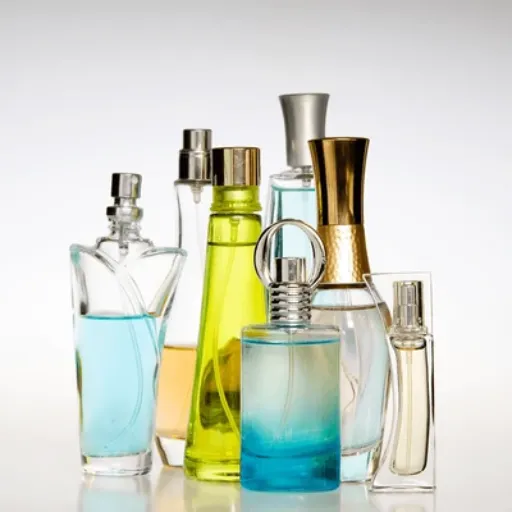
Many materials are used to manufacture perfume bottles, to strike a balance between beauty, durability, and functionality. The bottles often stand tall in elegance and preservation of the fragrance, the latter being mainly used for miniature decorative adornments or spray equipment of the bottle. Crystal lends luxury and a top brand impression, whereas ceramics provide unique textures and an artistic feel to these bottles. In recent years, recycled glass and biodegradable plastics have become favorites as sustainable materials, developing with the green trend in the industry. Each material complements the design language and personality of the perfume bottle, making it both striking and highly functional.
Eco-Friendly Alternatives in Bottle Design
Eco-conscious brands are increasingly seeking sustainable materials for perfume bottles to minimize their environmental impact. One of the innovation possibilities is the use of biodegradable materials, such as plant-based resins derived from sources like corn or sugarcane, which decompose faster than standard plastics. Refillable perfume bottles have gained importance, allowing users to refill their own bottles with a scent they prefer, thereby reducing waste.
Lighter packaging designs further help cut carbon emissions in shipment by increasing the weight-to-volume ratio. Some brands are even using recycled glass and metals in their designs, thus giving a second life to previously discarded materials. These activities marry sustainability with functionality to ensure that eco-friendly options meet consumer expectations for high-quality and pleasing packaging.
Other Materials: Metal, Plastic, and More
Perfume bottles exist in myriad forms, some combining glass with metal and plastics for functionality and design. Aluminum or stainless steel is mainly used in caps, sprayers, or in ornamental works for perfume bottles, lending strength and a smooth, polished finish. Plastic, meanwhile, is commonly used for the production of lightweight, shatterproof items, making it an ideal option for travel-friendly packaging. Modern technology now offers solutions in the form of biodegradable plastics and recycled polymers, addressing customers’ desire for greener packaging. Working in combination, these materials enable manufacturers to create perfume bottles that strike a balance between sustainability, style, and practicality.
Shapes and Designs of Perfume Bottles
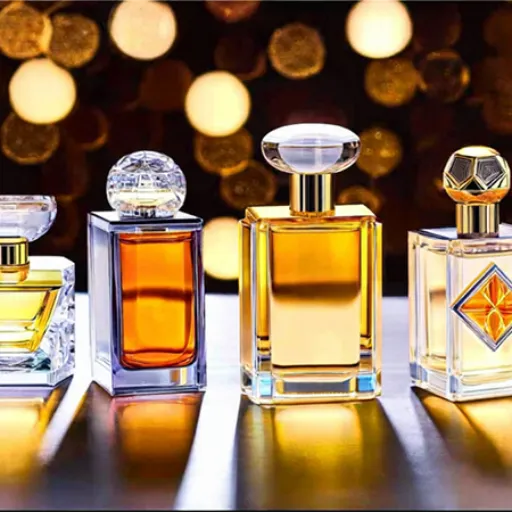
The bottles for perfume come in various shapes and styles, all designed to reflect the brand’s identity and appeal to its clientele. The standard shapes are cylindrical, rectangular, oval, and square, with a visually pleasing list of functions. Some brands delve into artistic custom designs to convey a sense of luxury, quaintness, or exclusivity, featuring scrolled details, immense curves, or symbolic elements. That very shape and design is frequently thematic with the fragrance, giving an uplift to the sensory experience.
Unique Bottle Shapes and Their Significance
Unique perfume bottle shapes play a significant role in distinguishing a fragrance and communicating its story to potential buyers. Their designs may be inspired by nature, art, architecture, or cultural symbols to produce bottles that are both recognizable and meaningful in appearance. For example, bottles shaped like flowers, hearts, or teardrops invoke romance, sophistication, or eternal beauty. Other designs favor geometric forms or bare-based aesthetics to embody modernity and glamour.
The shapes, even more than just containers, embody what the fragrance represents or moods. For instance, a bottle bearing sharp angles could perhaps symbolize a fragrance that is equally assertive and confident; conversely, a bottle with a flowing, round shape might feel at home with a warm, floral scent. The more eccentric the shape—did it truly sing in the form of a jewel or abstract sculpture?—the more it imparts exclusivity and artistry, catering to collectors and the world of luxury.
In the end, spellbinding bottle shapes allure consumers and stir their emotions; they bind outer thoughts with inner notes.
Modern Perfume Bottles: Trends in Design
The world of perfume bottle making remains at the forefront of evolving trends, with sustainability increasingly highlighted over time. With the rise in environmental consciousness, many labels are now favoring environmentally friendly packaging solutions of some sort. These may include recyclable materials, refillable bottles, and minimalistic designs to reduce wastage, all culminating in the simplest form of packaging. For instance, there are a few high-end perfume brands that offer refillable bottles, thereby aligning their product packaging with a zero-waste ideology while maintaining an extremely beautiful aesthetic. Additionally, choosing biodegradable or sustainably sourced materials for the production of these perfume bottles is another environmentally friendly practice that the industry is embracing these days. Thus, this trend not only caters to the ecologically conscious audience but also establishes green consciousness within the fashion and beauty world.
Antique Perfume Bottles: A Look at Historical Designs
Antique perfume bottles offer a fascinating journey through the ages, showcasing the artistry and craftsmanship of the past. From Victorian glass, grand, ostentatious, and wildly lustrous, to much more refined porcelain of the eighteenth century, these bottles chart the course of ever-changing cultural and aesthetic value systems in history. Many are museums of miniature and detailed work, which may be hand-painted, with occasional adornment of gilding; others opt for a free-form style inspired by nature or architecture. Historically, perfume bottles were a luxury indulgence, designed to ensure their contents would never be considered ordinary. Today, these wonders are cherished by collectors for their beauty and historical significance, providing a glimpse into the worlds of art, fashion, and utility that intersect.
Functionality of Different Types of Perfume Bottles
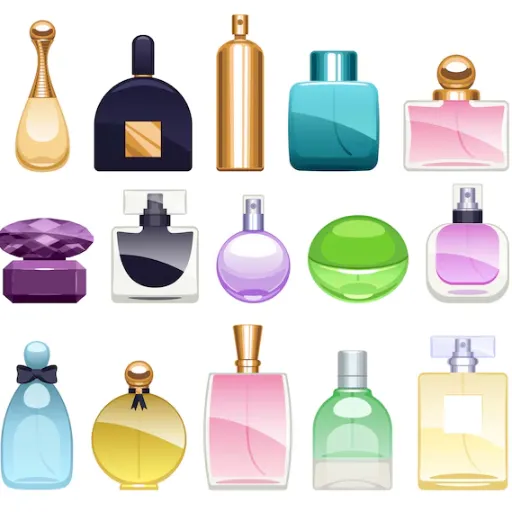
Memory storage for perfumes is one of the most significant design areas where aesthetics meld with functionality for fragrance storage and application. Traditional splash-style bottles are simple, requiring the uncaring pouring or spreading of the fragrant liquid on the body. Spray bottles are thus more modern and user-friendly as they completely treat the fragrance. Roll-ons are small and used for applications where control is required, mostly with oil-based perfumes. Refillable atomizers, however, offer a travel-friendly solution that strikes a balance between convenience and the ability to take your favorite fragrance along. Each variety caters to different needs, fusing utility with taste.
Understanding Spray Bottles vs. Roll-On Bottles
| Parameter | Spray | Roll-On |
|---|---|---|
| Application | Mist | Targeted |
| Portability | Moderate | High |
| Fragrance Type | All | Oil-Based |
| Coverage | Broad | Precise |
| Refillability | High | Moderate |
| Usage Convenience | Easy | Easy |
These key points offer a concise comparison, enabling users to select the best option based on their specific needs.
The Role of Bottle Size in Scent Preservation
Generally, the size of the perfume bottle affects how well the scent is preserved, and this holds for all scents. Smaller bottles are often preferred for better scent preservation because they restrict the fragrance’s exposure to air, thus preventing oxidation and loss of the basic scent formations. Larger bottles for frequent users can encourage economy, meaning any quality decline might occur only if the bottle is not emptied quickly. A smaller size will ensure the fragrance remains fresher and authentic to its original state for users who rotate between scents or prefer minimal use. Proper storage and sharing with the appropriate choice of bottle size maintenance will only enhance the earning set.
Practical Aspects of Perfume Packaging
The packaging of perfumes enhances both the consumer’s experience and the product’s preservation through thoughtful design and functionality. Some of the recent developments in perfume bottle technologies include airless pump systems that prevent oxygen from entering, thereby extending the fragrance’s life. Also gaining prominence are ecological packaging processes in which many companies opt for recyclable materials and refillable bottles to lessen waste. Beautiful packaging will certainly be a determining factor in customer purchasing decisions, as a good design attracts consumers and conveys an image of exclusivity. In essence, packaging must now function effectively in terms of time and consumer needs while addressing environmental concerns and maintaining a visually appealing aesthetic.
Reference Sources
- Understanding Different Types of Perfume Bottles
This article discusses the types of perfume bottles, their design, functionality, and historical significance. - The Evolution and Creative Revolution of Perfume Bottle Design
Explores the journey of perfume bottle design from its early days to modern creative trends. - Perfume Bottle | Design, Fragrance, Decoration
A detailed overview of perfume bottles, including their history, design, and cultural significance. - The History and Evolution of Perfume Bottles
Covers the historical evolution of perfume bottles, including unique shapes and designs. - The Art of Custom Perfume Bottle Design: Trends and Innovations
Focuses on modern trends and innovations in custom perfume bottle design, including geometric-inspired bottles.

